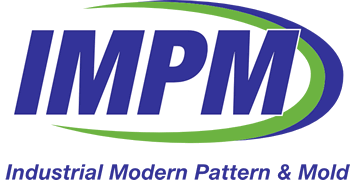When it comes to silicone tooling and cast urethane parts, IMPM is the leader in the industry. Through years of experience, we have mastered our proprietary silicone tooling process, being the only company that can guarantee 100 cycles out of a silicone tool! We continue to make advances in the rapid prototyping and rapid tooling industry.
Our latest cutting edge equipment includes a 113 cu ft pressure chamber for large parts, a simulated roto molding procedure that is a special process for hollow parts, and specialized, automated dispensing machines that allow us to do large parts with higher throughput. In addition, we have multiple vacuum-pressure chambers for standard parts. A master pattern and silicone tool at IMPM typically cost less than three SLA printed parts. Threaded inserts are molded in place, not added as a secondary process, making it a much stronger bond to the part. Parts look, feel, and perform like production parts (and often are).
IMPM has access to hundred of urethanes, many of which were developed to mimic the mechanical properties of production plastics – ranging from Shore 10A to shore 85D. As long as we are provided with a color code or physical sample, we can color match most of our urethanes to almost any color. Along with color matching, we can offer a variety of textures, giving you nearly endless appearance options.
Cast Urethane
Cast urethane is a method of plastic molding in which a mold cavity is filled with a liquid thermoset resin, and set to cure to it’s stated hardness. Typically, molds are made from silicone rubber and use a 3D printed part, generally SLA, as a master pattern for the mold. This method is also called RTV molding. Cast urethane is the fastest, low-cost molding process for parts with very low quantities. Where 3D printing will produce feel, fit, and form for your prototype, cast urethane goes beyond to produce function as well. Each 3D printing process has it’s own drawbacks, whether it be appearance or performance, while cast urethane aims to bridge all the gaps of those various 3D printing processes. Urethanes come in any number of durometers and almost any secondary finish can be applied. Cast urethane is the ideal method to test pre-production parts, production parts, prototype functionality, and design verification.
The possibilities of cast urethane are endless, and it proves to be a perfect low-volume solution. The level of detail in IMPM’s cast urethane parts is unmatched and has earned us our reputation as leaders of the process. Regardless of whether it’s used for prototyping, production, or bridge tooling, you will find value in our cast urethane capabilities.
Silicone Tooling at IMPM
IMPM has perfected the techniques to optimize the performance of silicone rubber molds. We have extended mold life, increased part accuracy, and enhanced surface finish. While people familiar with the process will often note limitations with the process, we have found that we don’t have the size and complexity limitations as others, provided geometry falls in the realm of physically moldable. Often times, products are expected to have short shelf lives due to rapidly changing technology or design needs. Short-run production allows you to create your part for quick time-to-market with a fraction of upfront costs.
- 100 shots guaranteed from IMPM’s silicone tools
- Over 140 materials stocked
- FDA compliant materials
- Urethanes produced with any durometer, both rigid and elastomeric
- Urethanes cast in color
- Color match service (via Pantone® number, color code, or provided sample)
- Texturing added to master pattern for ease of replication
- Less drafting concerns
- TWR-100 injection system for precise control of mix-ratios, shot sizes, and material flow rates
- Vacuum holding tanks for air-free material delivery









Bridge Tooling
Bridge tooling, or rapid tooling, is the molding process used between the end of product development and the beginning of production. Why might a company utilize bridge tooling? Often a company will be in a situation where prototypes have been approved and production tooling has been sourced, however, traditional production tooling (typically steel tooling) is a very untimely process. This becomes an issue when demand is present but supply is distant. Less traditional molding methods, such as silicone tooling and aluminum tooling, are then utilized to bridge the supply gap. Immediate demand is now serviced until production tooling is ready to run. Typically, silicone tooling is an ideal option when quantity needs are between a few and a couple hundred parts. Since our proprietary process is done at such a high level, there is no sacrifice in appearance or performance with cast urethane parts in our silicone tools.

